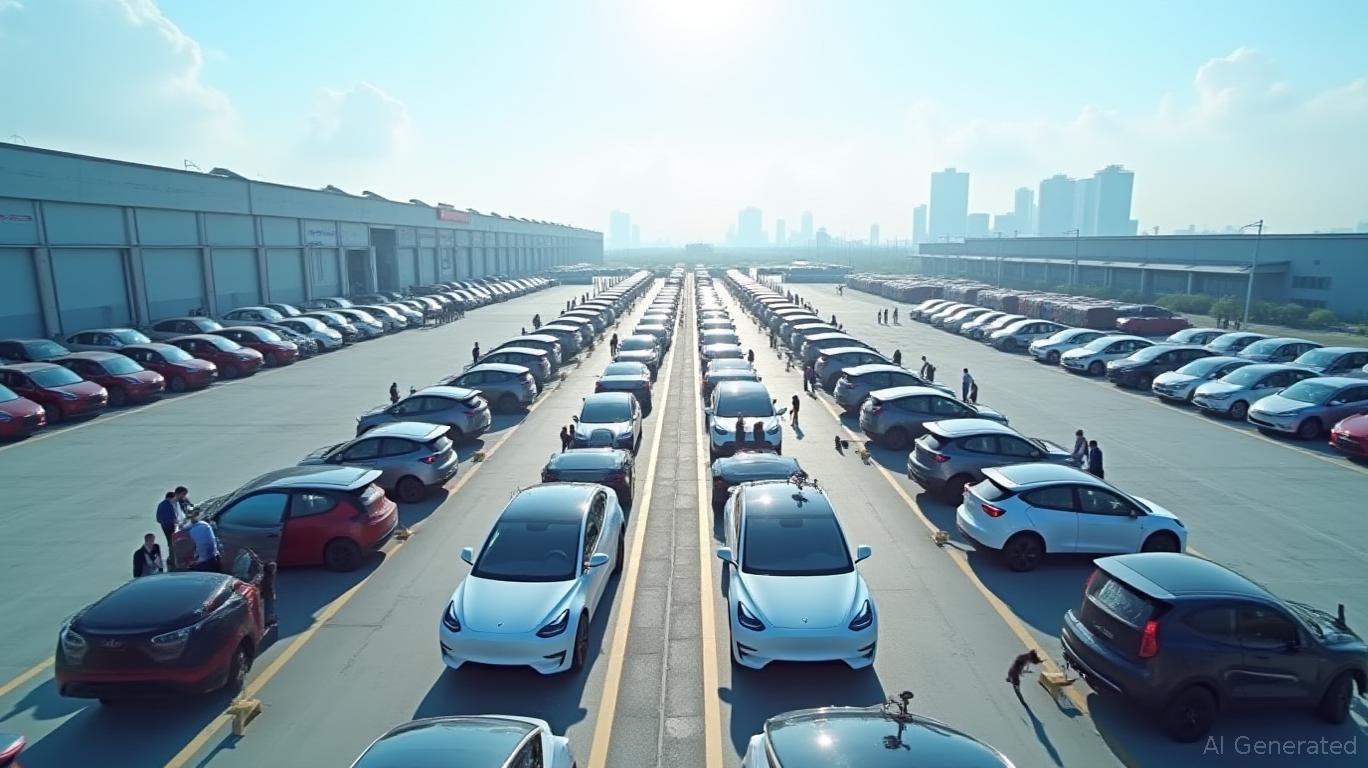
Tesla’s June 2025 sales surge in China offers a flicker of hope amid a challenging quarter, but the road ahead remains fraught with obstacles. While the automaker’s final-week June sales hit a quarterly high—driven by strong demand for its updated Model Y—Q2 deliveries still declined 10.9% year-over-year. This mixed performance underscores a critical tension: can Tesla’s strategic pivots, such as its V4 Supercharger rollout and Robotaxi ambitions, offset mounting competition and execution risks in the fast-evolving EV landscape?
Near-Term Catalysts: A Sales Rebound, But Fragile Momentum
Tesla’s June sales data provided a glimmer of optimism. In the final week of the month, domestic registrations soared to 20,680 units—a 49% weekly jump and a 46.7% year-over-year improvement. The New Model Y, refreshed with minor design tweaks and price cuts, drove 15,210 deliveries, its highest weekly tally since launch. This rebound suggests Tesla’s pricing strategy and product updates are resonating with Chinese buyers, even as the broader market faces saturation.
However, the broader picture is less rosy. Q2 deliveries fell 4.6% quarter-over-quarter and 10.9% year-over-year, with the Shanghai factory’s exports slipping 22.4% month-over-month in May. Analysts now project Tesla’s 2025 global sales could decline 6% year-over-year—the second straight annual drop—highlighting lingering demand issues.
Strategic Pivots: V4 Superchargers and Robotaxi’s Long-Term Bet
Tesla’s long-term growth hinges on two transformative initiatives: its V4 Supercharger network and its Robotaxi program. In China, the V4 rollout—now operational in four cities with plans to expand to Beijing and Guangdong—offers a 500-kW charging capability, cutting recharge times to 15 minutes for 200 miles. This addresses “range anxiety,” a key barrier to EV adoption, and positions Tesla to compete with rivals like BYD, which is deploying 1,000-kW chargers. While BYD’s chargers are faster, Tesla’s cost-efficient network—$40,000 per station—allows rapid scaling, leveraging its existing 11,600 Supercharger stalls.
Meanwhile, Tesla’s Robotaxi pilot in Austin, Texas, marks a critical step toward its vision of autonomous mobility. The service’s initial success—with zero human intervention in its first fully autonomous delivery—hints at Tesla’s potential to disrupt ride-hailing markets. CEO Elon Musk aims to eliminate safety monitors within months and scale the fleet to hundreds of thousands of cars by year-end. Yet challenges loom: Texas’s September 2025 regulatory requirements, NHTSA scrutiny of safety incidents, and Tesla’s vision-only FSD system’s reliability in diverse environments remain open questions.
Risks: Competition, Cost Pressures, and Autonomy’s Uncertainty
The near-term risks are daunting. China’s EV market is now fiercely competitive, with BYD, Li Auto, and Nio aggressively cutting prices and improving charging infrastructure. BYD’s 15,000 planned ultra-fast chargers by 2025 threaten to outpace Tesla’s rollout. Meanwhile, Tesla’s European sales dropped 27.9% year-over-year in May, signaling broader demand headwinds.
Long-term risks center on autonomy. Tesla’s camera-only FSD system, while cost-effective, has stumbled in edge cases (e.g., wrong-way driving, school bus interactions). Competitors like Waymo, with lidar and geofenced strategies, may outpace Tesla’s “general solution” approach. Scaling the Robotaxi fleet globally requires overcoming technical, regulatory, and public trust hurdles—a process that could take years.
Investment Implications: Buy with Caution, Horizon Matters
Tesla’s strategic pivots—product updates, V4 Superchargers, and Robotaxi—suggest undervalued catalysts. The V4 rollout addresses a critical infrastructure gap, while the Robotaxi’s potential to generate recurring revenue could reshape Tesla’s valuation. Bulls argue these moves could unlock a $1 trillion robotics ecosystem, justifying a stock price climb to $2,600 by 2030.
However, near-term risks—delivery volatility, margin pressure, and regulatory setbacks—demand caution. Analysts project Tesla’s 2025 sales decline, and its P/E ratio of ~175 is perilously high for a company facing execution uncertainties.
Final Recommendation
Investors should consider Tesla a buy with a medium-term horizon (1–3 years). The V4 and Robotaxi initiatives are underappreciated growth levers, and the June sales rebound signals resilience. Yet, near-term volatility—driven by quarterly delivery fluctuations and regulatory delays—requires patience. Diversify risk by pairing Tesla with safer bets like Alphabet (Waymo) or Nio. For now, Tesla remains a high-reward, high-risk play: its success hinges on turning prototypes into scalable realities, a feat that could redefine the EV era—or expose its ambitions as overreach.
Final verdict: Buy with a medium-term focus, but brace for bumps in the road.








